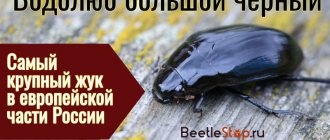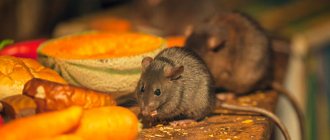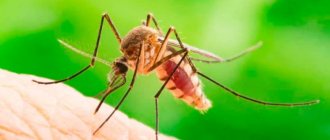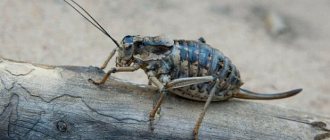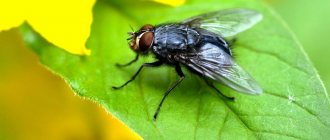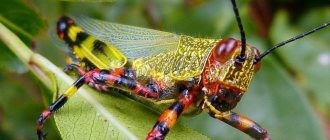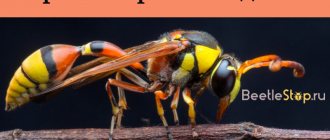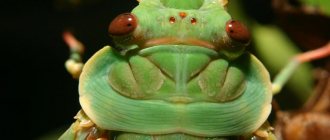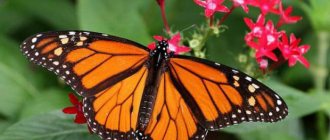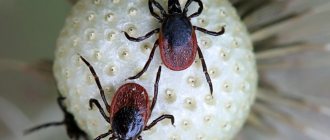Coleoptera, or beetles (Coleoptera), an order of insects, the largest taxon in the animal kingdom.
In total approx. 1 million species of this kingdom, of which approx. 700 thousand fall on the class of insects, among which approximately 300 thousand are Coleoptera, or beetles. Scientists describe several thousand new species every year. The name of the detachment comes from the Greek. koleon – case and pteron – wing. Its members are characterized by rigid forewings, called elytra, or elytra, which close (and sometimes are fused) along the midline of the back, forming a protective cover for the membranous hind wings. These are the only insects that use primarily their posterior pair for flight, and in a flying beetle, unlike representatives of other orders, the main part of the body is located in front of the working wings. Also on topic:
INSECTS
The beetles are distributed almost throughout the world and are found in a wide variety of habitats, including under rocks and logs, on the forest floor, in gravel along river banks, and in fresh water bodies. The larvae of many Coleoptera live in wood or under the bark of trees, and in some species, in the decaying remains of animals. Representatives of several families form a symbiosis with ants.
Almost any organic material can serve as food for one or another group of Coleoptera. Many beetles feed on plants (phytophagous); some prey on insects, snails or other small invertebrates. A number of species feed on dead or decaying tissues of plant or animal origin.
Structure and physiology.
Also on topic:
SYSTEMATICS OF ANIMALS
The order Coleoptera includes both the largest and smallest insects. The Hercules beetle (Dynastes hercules) from Central America can reach a length of 15 cm, including a long horn on the prothorax, and some small species are no longer than 0.5 mm. The body of adult beetles consists of three main parts: the head, thorax and abdomen. Although this body partition is typical for all insects, some features make it possible to distinguish Coleoptera from representatives of other groups.
On the head there are developed antennae (antennae, tassels) and mouthparts - most often of the gnawing type with horizontally moving parts. It consists of three pairs of appendages: mandibles (lower jaws), upper jaws and lower lip. The mandibles are solid, located above or in front. Behind or under them are articulated lower jaws, each of which bears a palp on the outer side, also consisting of 4 or 5 segments. The lower lip is similar in structure to a pair of jaws fused together along the midline, but its palps are usually three-jointed. In phytophagous beetles, the mandibles are usually directed downward (orthognathic type of head), while in predatory species they are directed forward (prognathous type).
Also on topic:
Lamelatinate
The chest, the part of the body adjacent to the head, consists of three segments. The first - the prothorax - bears only a pair of legs. Beetles usually have a larger prothorax than most other insects. The second segment (mesothorax) bears, in addition to a pair of legs, a pair of hard or leathery elytra. The third segment (methothorax) contains the third pair of legs and membranous hind wings, which can fold so that they fit completely under the elytra, but are sometimes absent altogether.
Behind the chest is the abdomen, consisting of several segments of a similar structure, covered on top by elytra. Along the midline of the abdomen from the dorsal side (where the elytra meet), a straight line seems to be drawn. With rare exceptions, it is characteristic of all beetles.
During flight, the elytra are either raised and create lift, or remain folded even after the hind wings have spread. Although many beetles simply need to spread their wings and jump up to fly, some larger and heavier species must climb trees and warm up in the sun to do so. It is widely believed that the prosperity of insects as a group is due to their ability to fly. However, the most successful group among them are beetles, which for the most part fly worse than representatives of many other orders. At the same time, the elytra and thick cuticle perfectly protect them from mechanical damage and loss of moisture. In all likelihood, it is these factors that give them their advantages.
The cuticle of beetles, which plays the role of both body integument and exoskeleton, is much tougher and thicker than that of most other insects. Most often it is shiny, brown or black, but in some species it can be bright and even covered with colored dots, spots, stripes or a complex pattern that imitates the color of the environment (protective coloration). Since the body coverings are hard, the mobility of the beetles is limited, and, having turned upside down on a smooth surface, they can hardly return to a normal position on their own. To overcome this situation, many species, such as click beetles, use special mechanisms.
The internal structure of Coleoptera is typical for the class of insects. The heart is located just below the cuticle along the midline of the back, and the nerve cord runs along the underside of the body. The circulatory system is not closed, i.e. blood (more precisely, hemolymph) is not enclosed in veins and arteries, but freely washes the internal organs. Beetles breathe air, which penetrates inside through spiracles (stigmas) on the sides of the body and reaches all tissues through a system of branched tubes - the so-called. trachea.
Some beetles, such as those from the weevil family, can reproduce parthenogenetically, without fertilization. The males of these species are unknown. However, most reproduce sexually. Males and females can differ significantly in appearance (sexual dimorphism) and numbers. In bark beetles, for example, there are up to 60 females for every male.
During mating, the male usually releases enough sperm to fertilize all the eggs the female can lay in her lifetime. Sperm are stored in the female's body in a special sperm receptacle, and fertilization occurs immediately before each egg laying. Males of some species produce sperm in special cases, the so-called. spermatophores, which are transmitted to females during mating.
Compared to most other insects, beetles' eyes are less developed (with the exception of predatory species), so they navigate mainly using their well-developed sense of smell. Olfactory receptors are located on antennae, which come in a wide variety of shapes. For example, in dung beetles, the end segments of the antennae are expanded in the form of plates and can move apart and fold like a fan.
Beetles hear, as a rule, poorly. However, some of them can produce a kind of squeaking sound due to the friction of body parts against each other or make sounds by lightly tapping their heads on a hard surface. These same species are also capable of perceiving the sounds produced, and their hearing is better developed than that of other Coleoptera. Grinder beetles are widely known to “tick” like a clock, tapping their heads on the wood in which they make passages.
Belly
Behind the chest is the body, which consists of several parts and is covered by elytra on top. Representatives of Coleoptera have a cuticle, which acts as an external skeleton and body cover. As a rule, it is thicker and tougher than that of many other insects. There are black, brown, shiny colors. And in some beetles it is covered with colored spots, stripes or patterns, similar to the natural environment in which it lives.
The mobility of Coleoptera is very limited due to the fact that the integument of the body is rigid, therefore, if a beetle turns upside down on a flat surface, then in most cases it will not be able to return to its original position on its own. The hard cuticle, as well as the elytra, perfectly protect the insect from moisture loss and mechanical damage.
Life cycle.
Beetles belong to a group of insects called Endopterygota. Like its other representatives, their wings at the larval stage are laid inside the body and at this time are not visible from the outside. The life cycle of most beetles is as follows: egg - larva, which molts several times as it grows, - pupa - adult insect (imago). Larvae and adults differ greatly in structure and sometimes in lifestyle. Moreover, in some families, the larvae noticeably change shape with each moult and, depending on their age, look completely different.
Beetle eggs are usually white. The smallest of them are almost invisible, while the largest ones reach a length of 3 mm. Many species deposit them in wood or under the bark of trees, some on plant leaves, and several groups deposit them in the carcasses of large animals in various stages of decomposition.
Most larvae have a well-developed head and three pairs of thoracic legs. Often at the end of the abdomen they have another pair of appendages similar to legs - pseudopods. However, the larvae that live inside plants can be legless and worm-like. The larval stage ends with transformation into a resting pupa.
Pupation of many Coleoptera occurs inside chambers (“cradles”) in the soil or in wood. The larvae of some weevils pupate in cocoons, which are spun from the adhesive secretion of special glands that hardens in the air, secreted through the anus. During the pupal stage, a complex set of changes occurs that result in the formation of extremely diverse adult beetles (adults). These transformations include the development of imaginal walking legs, wings, antennae and mouthparts. When an adult beetle emerges from the pupa, its wings and elytra straighten, turning inside out, under the pressure of the hemolymph pushed into them. Then the hemolymph is pumped out of them, and the upper and lower layers of the wing stick together, forming a thin plate.
Adult beetles usually live longer than adults of most other insects. Their larvae can also develop very slowly. For example, the larval stage of some click beetles, in which they are called wireworms, lasts at least 12 years before pupation. The larvae of one Indian longhorned beetle lived for 10 years in captivity, although the adult beetles of this species are short-lived. In the laboratory, the adults of one large darkling beetle did not die for 9 years, but species are known whose adult stage lasts only a few days.
Cicindelidae
(horses). Described approx. 1300 species of jumping beetles. These are agile and attractive insects, often brightly colored blue, green or red with a metallic sheen, especially on the underside. The upperparts of the body are usually sandy or reddish in color with a clear pattern. Most often, horses can be seen in sandy areas, especially in hot and sunny weather. They react sensitively to the approach of a person, taking off into the air and landing several meters further from the stranger, and then turn around and begin to watch him again. Horses run fast and are able to protect themselves with long, sharp mandibles. Their larvae live in burrows dug underground up to one and a half meters long.
Zlatki
Gold beetles (Buprestidae) are very beautiful. Golden, green, yellow, with multi-colored spots. All borers have a very durable shell. They feed on leaves or thin bark of plants, causing significant damage to plants. In sunny weather, beetles quickly run from one place to another along tree trunks heated by the sun; No wonder they are called “children of the sun.”
Chrysanthemum on a buttercup flower
Carabidae
(ground beetles). Described approx. 20,000 species of these beetles; some of them reach a length of 90 mm. Characteristic features of ground beetles as predatory insects include long legs, large bulging eyes and forward-pointing sharp mandibles. Their larvae are also predators, but, like adults, they can also feed on animal corpses and other decaying organic matter. One group of ground beetles eats exclusively seeds.
The color of these beetles is usually black, brown or metallic, and the elytra are often streaked with longitudinal lines. Ground beetles can be found on the surface of the ground or in the soil, especially along rocky banks of streams and rivers, as well as in rotting wood. In some species, the hind wings are absent and the elytra are fused. However, many tree-dwelling tropical species have well-developed membranous wings and are excellent fliers. Most ground beetles can secrete a foul-smelling liquid from the rear end of their body, which probably serves to scare off enemies. In bombardier beetles, it immediately turns into steam, taking the form of a dense cloud, and its ejection is accompanied by a rather loud shooting sound.
Dytiscidae
(swimmers). Known approx. 2100 species of these beetles. Both larvae and adults live in water. Adult beetles have a smooth, streamlined body. They are usually black or dark brown, sometimes with longitudinal stripes on the elytra. In many species of swimming beetles, the males have large, rounded pads on their front legs that help hold the female during mating. The larvae of diving beetles prey on tadpoles, small fish and insects of other species. They grab prey with long sickle-shaped mandibles, inside of which there is a channel that opens with a hole at the top. When the mandibles penetrate the prey, digestive juice is injected into its body through these channels. Under the influence of its enzymes, the tissues of the prey are liquefied and then absorbed by the beetle through the same channels. Thus, digestion occurs outside the swimmer's body.
Silphidae
(dead eaters). Described approx. 600 species of these beetles. The most famous members of the family with a black and orange pattern on the elytra are called burying beetles. They lay eggs on the carcasses of small animals, which they then bury in the ground (“bury”). Burying it protects the corpse from drying out during the period when the larvae feed on it. Unlike brightly colored burying beetles, some carrion beetles are black, with a dull, rough body surface. Species living in anthills and eyeless cave forms are known.
Stages of development
In the first summer, the larvae eat humus and grass roots. In winter, it hides 1.5 meters into the ground, and with the arrival of spring it moves closer to the root system of plants.
The two-year-old larva feeds on the roots of a young tree. In the third year, it reaches a size of five to six centimeters; now it can even gnaw the roots of adult trees. In the fourth year of life, the larva transforms into a pupa, and two months later it becomes a beetle.
In winter, the beetles are in suspended animation; with the arrival of spring warmth, the May beetle begins its flight.
Coccinellidae
(ladybugs). Described approx. There are 3800 species of this family. Although ladybugs are predators, in appearance they bear little resemblance to predatory insects: they have neither long legs nor large bulging eyes. This may be due to the fact that most of them hunt sedentary prey, such as scale insects, other homoptera and aphids. As a rule, ladybugs have a wide, rounded body ranging from 0.25 to 1.3 cm in length. The elytra are often red or orange with black dots, and the antennae are usually somewhat club-shaped. The paws are adapted for living on plant leaves. They are four-segmented, but appear three-segmented. In the fall, some species climb into houses where they remain for the winter. Others migrate in large groups to mountainous areas and spend the winter in caves or piles of stones. The larvae are covered with longitudinal rows of peculiar tubercles and a distinct pattern of black spots. Ladybugs often pupate on the food plants of their prey, hanging upside down.
Human interaction
Many beetles cause damage to agriculture. Larvae of beetles and wireworms develop in the soil for several years, eating the roots and underground trunks of cultivated plants. The upper part of the trunk is gnawed by beetles such as longhorned beetles, borers, bark beetles and borers. The leaves of plants suffer from the invasion of weevils, leaf beetles and tubeworms. Some beetles prevent pollination and fruit formation of many crops by eating their flowers and pollen. These pests include pollen eaters, weevils and some weevils.
Insects such as flat beetles, leather beetles, grinders and pretenders settle in private houses and utility rooms. There they destroy food supplies and raw materials. Also dangerous to agriculture are poisonous beetles, which, along with feed, enter the digestive tract of livestock and lead to serious poisoning.
Beneficial insects
In addition to human enemies, among the order of Coleoptera there are insect helpers.
Farmers use ladybugs, rove beetles, blister beetles, little beetles and other predatory insects as a safe biological method of controlling many pests.
It is also impossible to overestimate the role of dung beetles and carrion beetles. By processing the decomposing remains and excrement of animals, these insects act as real orderlies of natural and agroecosystems.
Tenebrionidae
(darkling beetles). More than 10,000 species of darkling beetles are known. The appearance of representatives of this family is very typical for beetles in general. They are approximately 1.3 to 5 cm long and are usually brown or black in color. Many species have clearly protruding stripes along the elytra. Darkling beetles can be distinguished by two clearly visible features: the tarsi of their hind legs consist of only 4 segments, while the front two pairs have five, and the posterior edge of the eye often continues as a thick ridge on the side of the head. Some darkling beetles live in semi-deserts, many live in the soil or on its surface. The larvae of a number of soil species harm plants like wireworms, which they resemble in appearance; they are called false wireworms.
General characteristics of the class
They live in soil, water, plant tissues, animals and humans.
Fertility:
- queen bee - 1,500,000 eggs in her entire life (lives 5 years).
- termite queen - 10,000,000 eggs per life (lives 10 years).
Benefit:
- pollinate plants;
- destroy field pests;
- gardens and vegetable gardens.
Harm:
- blood-sucking (affect milk yield);
- carry pathogens from animals to humans (lice - typhus, relapsing fever; mosquitoes - malaria; flies - eye diseases).
Types of mouthparts:
- gnawing - beetles, cockroaches, grasshoppers;
- sucking - butterflies;
- piercing - mosquito;
- licking - fly;
- gnawing-licking - bees, gadflies, wasps, bumblebees, hornets.
Vision is complex (faceted).
A person distinguishes about 60 individual colors; bees see yellow, blue-green, blue, ultraviolet (butterflies see red).
The shape of objects is distinguished - predatory (dragonflies, tyrs...); social (ants, bees, wasps).
The sense of smell is on the antennae (butterfly - 2-3 km).
Taste organ on the mouth parts (jaws, lips, palps).
Just like humans, they distinguish between sweet, sour, salty, and bitter.
Sense organs are well developed and provide insects with great information about the external environment.
Elateridae
(nutcrackers). Described approx. 7000 species of these beetles. Once on their backs, they can jump into the air, sharply arching their body, and land in the correct position. Because of the click that accompanies their turning over, they got their popular name. Most click beetles are brown, black or green with a metallic tint. Their antennas are usually serrated. The elytra are grooved and are usually equipped with a notch along the anterior edge into which the process of the prothorax extends: this adaptation provides the ability to jump with a characteristic click. However, not all members of the family have such a mechanism.
Adults so-called fire-bearing click beetles from tropical America have brightly luminous organs on the sides of the chest, similar in structure to those present in species of another family - fireflies (Lampyridae). The eggs and larvae of firecrackers also glow. Long, rounded in cross-section, the larvae of click beetles have durable integuments of yellow or brown color. Most of these “wireworms” live in the soil, some live under the bark of trees. Larvae of several species can cause significant damage by damaging the roots of agricultural plants.
What does Khrushchev eat?
In spring, when the air warms up to a temperature of +10°C and above, the cockchafer flies out. The insect causes enormous damage to fruit trees, damaging leaves, flowers, and ovaries. Apple, plum, cherry, and walnut trees suffer more than other trees. In addition, the May beetle can eat the needles and foliage of various shrubs. The only things he doesn't eat are lilac and ash leaves. Having destroyed the foliage in one area, the beetle flies to another.
The larvae damage the roots and trunks of plants and vegetable crops.
Dermestidae
(carpet beetles). Described approx. 600 of their species. Almost all skin beetles are relatively small, often spotted. The spots are associated with thin scales that partially cover the body, which can be one or more colors. The antennae are short, club-shaped, capable of inserting into special grooves on the prothorax. The color of the heavily pubescent larvae ranges from reddish-brown to black. They can be found on decomposing animal carcasses, in storerooms, under carpets, in woolen clothing, furs or leather, and can seriously damage these items. The larvae often molt, and their presence is revealed by accumulations of shed integument. Adult beetles eat the same food as the larvae, but during settlement, adults feed on pollen, so they are sometimes found on flowers.
Chrysomelidae
(leaf beetles). Described approx. There are 25,000 species of this family, one of the largest in the order of beetles. Although outwardly its representatives are somewhat similar to ladybugs, leaf beetles can be distinguished by an additional leg segment (it seems that there are 4 of them, but in fact there are 5) and a plant diet. These beetles are often brightly colored, sometimes have a metallic sheen, and often have a striped pattern. Some species known as flea beetles or ground flea beetles (subfamily Halticinae) are good jumpers. The mechanism of their jumping is the same as that of grasshoppers, due to the fundamental similarity in the structure of the hind legs, which have very thick thighs.
Scarabaeidae
(lamellae). Described approx. 15,000 species of this family. Lamellar beetles have a stocky shape and sizes from very small to very large (for example, the length of the Goliath beetle reaches 11 cm). The antennae are club-shaped, and the segments of the club are usually flattened and elongated into plates connected by the bases, which can move apart like a fan. Many species feed on dung and have a good sense of smell, which is necessary for searching for food. Scarabs make balls from dung, and then, moving backwards, roll them with their hind legs and bury them in loose soil for storage. In Ancient Egypt, these beetles were considered sacred.
Some Indian dung beetles make huge balls of dung and cover them with clay before burying them. When such balls were found in a semi-petrified state, they were sometimes mistaken for stone cannonballs. Adult representatives of another group, beetles, feed on leaves, and their larvae feed on plant roots.
Curculionidae
(weevils, or elephant weevils). Described approx. There are 40,000 species in this family, the largest in the animal kingdom. Its representatives are easily recognized by their elongated “nose” (rostrum); There are species in which it is 3 times longer than the body. Unlike the sucking proboscis of other insects, the rostrum of weevils bears at the end a gnawing mouthpart typical of beetles. In some species, such as the acorn weevil, females use the rostrum to bore into hard fruits and seeds, where they then lay eggs and where their larvae develop. The antennae of weevils are usually geniculate with clubs at the ends and go first to the sides of the head and then forward. The color of most species is dull, black or brown.
CLASSIFICATION
The order of beetles, or Coleoptera, is usually divided into three suborders.
1. Adephaga (carnivores). Mostly predatory beetles with simple thread-like or flagellate antennae, bulging eyes and five-segmented legs. Examples are ground beetles, whirligigs, and diving beetles.
2. Archostemata (archostemata). This is an ancient, once thriving, but now very species-poor group of rare, unusual beetles whose wing tips are curled into a spiral. It unites only two families - Cupedidae and Micromalthidae (they do not have Russian names).
3. Polyphaga (bivorous). An extremely species-rich, diverse group that includes all other beetles, in particular carrion beetles, ladybugs, darkling beetles, click beetles, fireflies, leaf beetles, longhorned beetles, and weevils.
Features of the cockchafer
He is considered one of the first heralds of spring. With the arrival of warmer weather, the Khrushchev wakes up from hibernation and goes in search of food. The insect flies very quickly, at a speed of two to three meters per second. Khrushchev is capable of covering about twenty kilometers per day. First, it rises up to a height of 5 to 100 meters, then, after circling above the ground several times, it flies further in a straight line. The interesting thing is that, according to the laws of aerodynamics, this insect should not fly due to the lift coefficient being too low.
Khrushchev always fly in a certain direction. It is impossible to knock them off course. In this regard, scientists even conducted some interesting experiments. Having caught the insect, it was released in another place, after which the cockchafer still returned to the previously chosen route.
These insects can navigate the terrain and the sun. During the flight, the beetle remembers bright objects that serve as a guide. In addition, these insects are susceptible to the influence of magnetic fields.
The rhythm of a beetle's life is determined by the sun. During the day, the insect sits on a tree, hardly moving, and it becomes more active in the evening. The life of the cockchafer is mainly nocturnal; it is at this time of day that it feeds and flies.
